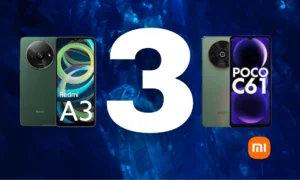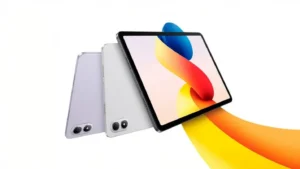Xiaomi HyperOS: Seamless Interconnectivity with Home Screen+ 2.0
Xiaomi HyperOS and Home Screen+ 2.0: The Interconnectivity Revolution Uniting Your Devices Like Never Before
Ever wished you could hop from your phone to your tablet without restarting apps, re-logging in, or waiting for downloads to finish? That dream is no longer a fantasy. With Home Screen+ 2.0 and the sheer power of Xiaomi HyperOS, Xiaomi is totally changing how we interact with our gadgets, delivering an unprecedented connectivity experience that just flows with you. In this article, we’re gonna dive deep into how this tech transforms your day-to-day, making your devices work together smarter, smoother, and way more efficiently. Get ready to discover an ecosystem that doesn’t just multitask – it elevates your productivity to a whole new level!
What is Xiaomi HyperOS and Why is it a Game-Changer?
Xiaomi HyperOS is the company’s latest operating system, built to unify and connect personal devices, from smartphones and tablets to smartwatches and home products. Unlike its predecessor, MIUI, HyperOS is built on five key pillars: system optimization, interconnectivity, proactive intelligence, security and privacy, and an open platform. This approach allows Xiaomi, Redmi, and POCO devices to work in harmony, crafting a user-centric ecosystem.

Initially launched in China back in 2023 and then rolled out globally in 2024, HyperOS has already evolved with its HyperOS 2.0 version, which is based on Android 15. This new iteration brings some serious upgrades in performance, smoother animations, and deeper integration between your devices. But let’s be honest, the real showstopper is its interconnectivity feature, spearheaded by Home Screen+ 2.0 and Xiaomi HyperConnect. These are the features that are truly taking the multi-device experience to a whole new level.
Home Screen+ 2.0: Switch Devices Without Missing a Beat
Picture this: you’re working on a document on your Xiaomi 15 phone, but then you realize the bigger screen on your Xiaomi Pad 7 would be way better for finishing it up. In the past, this would mean closing the app, opening it on the tablet, logging in all over again, and maybe dealing with sluggish syncing. Well, with Home Screen+ 2.0, that whole hassle is a thing of the past. This awesome feature lets you pin apps between compatible Xiaomi devices, keeping them active in real-time without needing to restart, re-login, or re-download any data.

So, how does it actually work? It’s pretty simple, really. Just connect your devices (like a phone and a tablet) using the same Xiaomi account, flip the Interconnectivity option in your settings (make sure Wi-Fi and Bluetooth are on, of course), and access the Xiaomi Smart Hub to manage the connection. Once that’s set up, you can drag apps from one device to another with just a simple gesture, almost like moving a window on your computer. For example, you can keep editing a Google Docs document, binge-watching YouTube, or even reply to a WhatsApp message without any interruptions whatsoever.
Beyond Multitasking: Key Interconnectivity Features
The interconnectivity offered by HyperOS isn’t just about Home Screen+ 2.0. Here are some other features that make this ecosystem so special:
- Effortless App Transfer: With Home Screen+ 2.0, apps don’t just transfer; they stay active. For instance, if you’re deep into a game on your phone, you can seamlessly pass that game over to your tablet without losing any progress.
- Call and Notification Sync: Thanks to Call Sync, incoming calls on your phone will also pop up on your tablet, so you’ll never miss an important call. Plus, notifications sync up, letting you reply from whichever device is most convenient at that moment.
- Shared Clipboard: Copy text, images, or links on your phone and paste them directly onto your tablet (or vice versa) with the shared clipboard. This is a lifesaver for anyone who juggles multiple devices and needs that agility.
- Playback Transfer: Listening to music on your phone? With Playback Transfer, you can effortlessly switch the playback to a Xiaomi speaker or even your tablet without pausing the song.
- Combined Camera: In apps like Google Meet or Instagram, you can actually use the cameras from both your phone and tablet simultaneously, which makes for some seriously dynamic video experiences.

- Integration with Apple Devices: HyperOS 2.0 isn’t just about connecting Xiaomi devices; it also offers compatibility with the Apple ecosystem through the Xiaomi Interconnectivity Services app, which you can grab from the App Store. This means you can share files, sync screens, and do more between a Xiaomi phone and an iPhone, iPad, or Mac.
- Wearable and Smart Home Support: Control devices like the Xiaomi Watch S4 or the Xiaomi Smart Band 8 Pro directly from your phone or tablet. You can manage fitness data or tweak smart home settings all through the Xiaomi Smart Hub.
Xiaomi is claiming that these features have been seriously optimized in HyperOS 2.0, boasting a 33% improvement in data transfer speed, a 15% boost in screen synchronization, and a 71% reduction in power consumption during these tasks, according to their internal tests.
Which Devices Are Compatible?
The interconnectivity features of HyperOS 2.0 are available on select devices, such as the Xiaomi 15, Xiaomi 15 Ultra, Xiaomi Pad 7, and the Xiaomi 14 series. More models are slated to get these Over-The-Air (OTA) updates in the future. In India, devices like the Xiaomi 13 Pro, Xiaomi Pad 6, and the Redmi Note 13 series have already received HyperOS. Older models like the Xiaomi 11 Ultra or Redmi K50i are also on the waiting list.
However, it’s worth noting that not all Xiaomi devices get full access to these capabilities. For example, some users have mentioned that devices like the Xiaomi Pad 5 don’t feature the interconnectivity panel, even with HyperOS installed. This suggests that the feature is really limited to certain flagship devices. Xiaomi does plan to broaden this compatibility, but for now, it’s a good idea to double-check the official list of supported devices on Xiaomi’s website.
Pros and Cons of Interconnectivity
Pros:
* Enhanced Productivity: The ability to seamlessly switch between devices is fantastic for professionals, students, and content creators alike.
* Unified Ecosystem: HyperOS connects not just phones and tablets, but also wearables, TVs, and smart devices, creating a cohesive environment.
* Apple Compatibility: The integration with iOS and macOS devices is a significant step towards interoperability between rival ecosystems.
Cons:
* Hardware Limitations: Not all devices support every interconnectivity feature, which can be a bit frustrating for users with older models.
* Connectivity Hiccups: Some users have reported issues with their devices detecting each other, especially if they’re running unofficial ROMs or different versions of HyperOS.
* Regional Availability: Certain features, like the Super XiaoAI voice assistant, are exclusive to the Chinese market, limiting the full experience in regions like Nepal.
How to Set Up Interconnectivity on HyperOS
To get the most out of Home Screen+ 2.0 and the other interconnectivity features, just follow these simple steps:
- Update to HyperOS 2.0: Make sure your devices are running the very latest version of the operating system. You can check for updates in Settings > About device > System update.
- Enable Interconnectivity: Head over to Settings > Interconnectivity and toggle the option on. Don’t forget to ensure Bluetooth and Wi-Fi are turned on.
- Log in with the Same Xiaomi Account: Every device you want to connect needs to be logged into the same Xiaomi account.
- Use the Xiaomi Smart Hub: Access the control panel right from your home screen or notification center to manage all your connected devices.
- For Apple Users: Download the Xiaomi Interconnectivity Services app from the App Store on your iPhone, iPad, or Mac.
If you run into any snags, it’s worth checking that system apps like com.milink.service and com.xiaomi.mirror are up-to-date. In some cases, manually installing the latest APK version of Interconnectivity might sort out any detection problems.
Conclusion: An Ecosystem That Flows With You
With Home Screen+ 2.0 and Xiaomi HyperOS, the brand is truly pushing interconnectivity to a level that can go head-to-head with giants like Apple and Huawei. The ability to switch between devices without a hitch, sync data in real-time, and manage a whole ecosystem of smart products makes HyperOS so much more than just an operating system – it’s your gateway to a more connected and efficient future. Whether you’re in Nepal, India, or anywhere else, these features are designed to fit right into your lifestyle, making your devices feel like a natural extension of yourself.
Ready to jump into the Xiaomi ecosystem? Go ahead and update your devices, switch on interconnectivity, and discover how HyperOS can totally transform the way you work and play. Share your experience using #XiaomiNepal and #TechTuesday! Which HyperOS feature are you most excited about? Let us know in the comments below!








1 thought on “Xiaomi HyperOS: Seamless Interconnectivity with Home Screen+ 2.0”